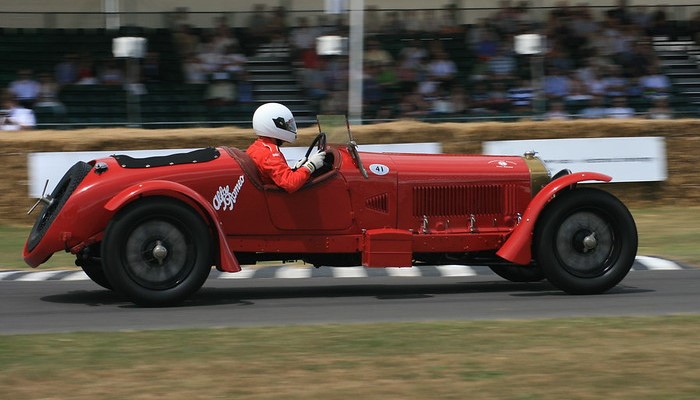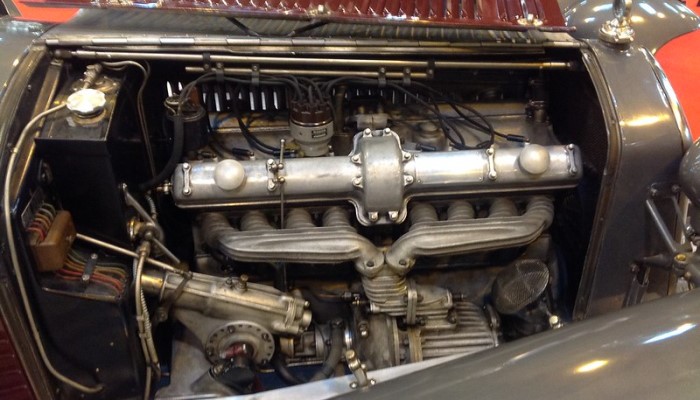Alfa Romeo 8C 2300

Photo: "Alfa Romeo 8C 2300, 1931" by Supermac1961
Superiority of the First Italian Supercar
Owners of the Alfa Romeo 8C 2300 belong to a very exclusive circle. Ferrari, Nuvolari, Caracciola, Tim Birkin, Count Trossi, Chiron... This is not a complete list of outstanding racers of the 1930s who proved the superiority of the first Italian supercar.
The 8C 2300 was so good that many drivers from factory teams of other brands purchased them with their own money in order to be able to race these outstanding cars.
The Alfa Romeo 8C 2300 was created by the company's chief designer, Vittorio Jano, based on the experience gained from the previous model, the 6C 1750. The engine of the new car had the same bore and stroke, but the number of cylinders was increased to eight.
Engine
Unlike the 6C, on which the supercharger could be installed upon request, in the new model it was an integral part. The fuel mixture, installed on the right side of the engine, was supplied to a Roots-type compressor through a two-chamber Memini carburetor.

Photo: "Alfa-Romeo 8C 2300 Corto Touring Spider (1932)" by andreboeni
In the center of the cylinder block, assembled in two parts, gears driven by the crankshaft were installed on the right and left. They rotated the upper camshafts, and in addition, the right one was responsible for the operation of the compressor and water pump, and the left one turned the generator.
Standard Alfa Romeo 8C 2300 engines had a compression ratio of 6.5:1 and ran perfectly on gasoline, with an octane rating of just over 80. However, for racing, the engines were tuned to run on Shell's proprietary fuel called "Dynamin," which was a mixture of gasoline, benzene, ethyl alcohol, and castor oil.
Chassis
The chassis was quite simple, consisting of U-shaped sections. The engine was attached directly to the frame, adding rigidity to the entire structure. The front and rear suspension of continuous axles was carried out on semi-elliptic springs.
Vibrations were muffled by friction shock absorbers. The factory produced chassis in two main sizes, with a wheelbase of 122 in (3,100 mm), Lungo, and 108 in (2,750 mm), Corto. The former were used to install four-seater bodies, and the latter for sports coupes and roadsters.

Photo: "1932 Alfa Romeo 8C 2300 Corsa Corto Spyder" by Sicnag
At the end of 1931, another type of chassis, different from the first two, was introduced with a base of 104 in (2,650 mm), a slightly different design, and shorter front springs, which shifted the front axle 4 in (100 mm) back.
A larger engine 156 ci (2,556 cc), capable of developing 178 horsepower, was installed on the chassis. These cars, with very light aluminum bodies and an integrated fuel tank, were intended exclusively for racing.
A quick look at the sports results
It is difficult to imagine a more auspicious start to the history of a sports car than that of the Alfa Romeo 8C 2300. In 1931, two weeks after the first unsuccessful start in the Mille Miglia due to tire problems, two crews—Nuvolari/Campari and Minoia/Borsaccini—took first and second places in the Italian Grand Prix in Monza. In honor of this achievement, Alfa Romeo gave the name "Monza" to the 8C 2300 Grand Prix cars.

Photo: "1933 Alfa Romeo 8C 2300 Monza" by exfordy
In 1932, the Alfa Romeo 8C 2300 became a dominant force on the racing circuit. Victory at Targa Florio, three consecutive victories at Le Mans, and first and second places in the Monaco Grand Prix. In total, more than 50 victories.
How Much is it Worth in Today's Market?
We're talking about a car that's extremely rare. In the last five years, only two were sold. One in August 2021 (RM Sotheby's, Monterey) for $1.16M, and the other in August 2023 (Gooding & Company, Pebble Beach) for a "tiny" $4.5M.
If it seems to you that this is beyond your financial capabilities (I'm really surprised), then there is a possibility of buying one of the replicas... Well, if there are any on the market. Replicas are also rare but much, much cheaper. We're talking about... $300,000. (oh yeah... affordable, right?)
This baby is the holy grail of vintage cars, the kind of ride that car enthusiasts drool over in their sleep. If you happen to have one of these monsters sitting in your garage, congratulations, you've got yourself a real gem.
And if you're thinking of buying one, well, let's just say you better start saving up your pennies now. Right now! So, how much is this masterpiece? Let's just say it's worth its weight in gold, and then some.

Unique Car Zone Team
A group of several fans of everything that moves on four wheels, a few article creators, a couple of marketing strategists, designers, web developers, and lots of coffee.






